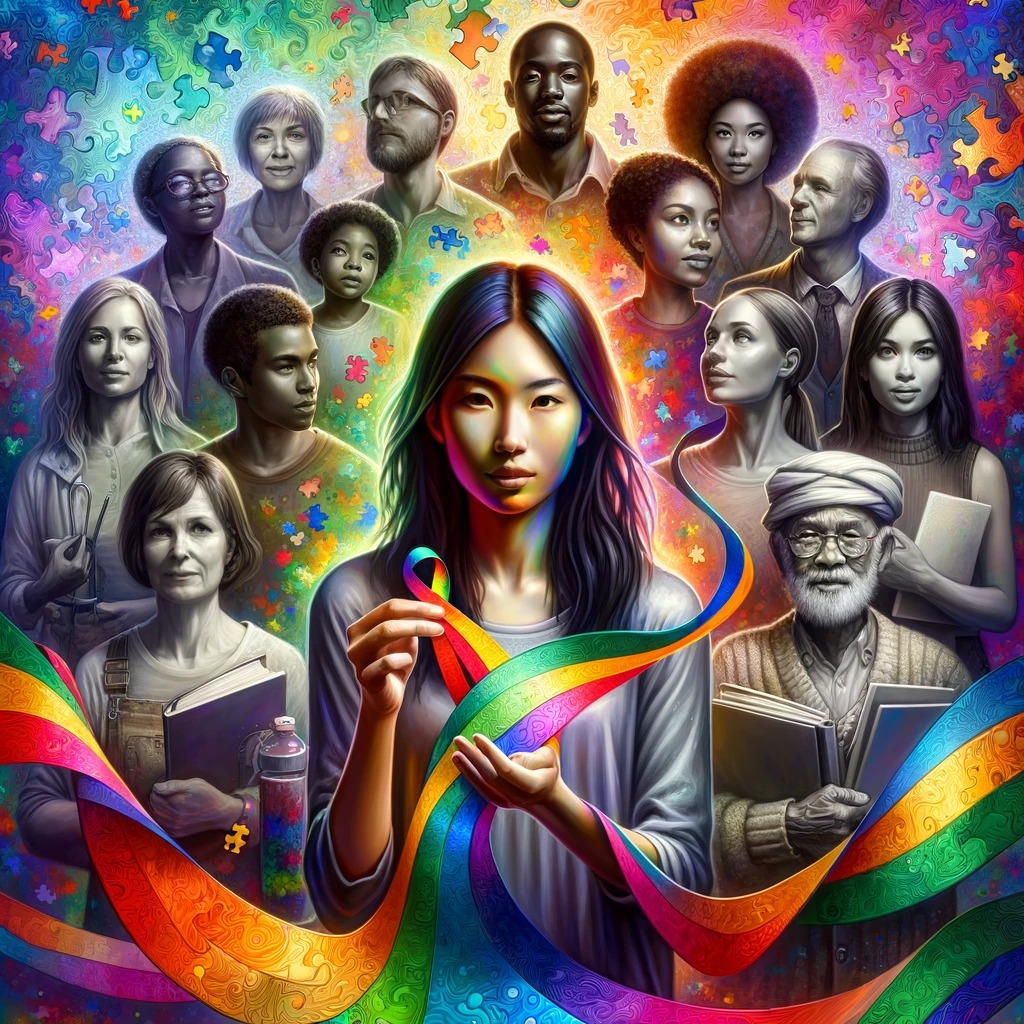The neurodiversity movement, a paradigm shift in how we perceive neurological differences, has been making waves in our understanding of what it means to be ‘normal.’ This movement, emerging in the late 20th century, has changed the narrative from one of pathology to one of diversity and inclusion. Let’s delve into the rich history and evolution of this transformative movement.
The Early Days: Seeds of Change (1990s)
The term ‘neurodiversity’ was first coined in the late 1990s by Australian sociologist Judy Singer, herself on the autism spectrum. It emerged as a challenge to prevailing views on neurological conditions like autism, ADHD, dyslexia, and others. These conditions were traditionally seen as disorders or deficits, but the neurodiversity movement sought to reframe them as simply variations in the human brain – akin to variations in race, gender, or sexuality.
This period was marked by a burgeoning internet, which played a pivotal role. Online forums and chat rooms became spaces where individuals with various neurological conditions could share experiences and insights, forming a nascent community. These digital interactions laid the groundwork for what would become a global movement.
The 2000s: Growing Awareness and Advocacy
Entering the new millennium, the neurodiversity movement began gaining traction. It wasn’t just about autism anymore; it encompassed a spectrum of neurological experiences, including conditions like dyspraxia, Tourette Syndrome, and others. Advocacy groups and organizations started to form, advocating for rights, accommodations, and acceptance of neurodivergent individuals in society.
During this phase, the movement saw an increasing collaboration between neurodivergent individuals and allies in academia, healthcare, and education. This period also marked the beginning of neurodiversity being discussed in the context of civil rights and social justice, drawing parallels with other movements advocating for diversity and inclusion.
The 2010s: Mainstream Recognition and Challenges
The 2010s witnessed neurodiversity gaining mainstream recognition. Major organizations and corporations began to acknowledge the value of neurodivergent individuals, leading to initiatives like the Autism at Work program by major tech companies. These initiatives highlighted the unique strengths and talents that neurodivergent individuals could bring to the workplace.
However, the movement also faced challenges. Debates arose within the community about the extent to which neurodiversity should encompass various conditions. There was also criticism that the movement was overly focused on high-functioning individuals, potentially overshadowing the needs of those requiring more support.
The Role of Media and Literature
Media and literature played a significant role in shaping perceptions of neurodiversity. Books like “NeuroTribes” by Steve Silberman and “The Curious Incident of the Dog in the Night-Time” by Mark Haddon brought neurodiversity into public consciousness. Films and TV shows began to feature neurodivergent characters, contributing to a shift in societal attitudes.
Impact on Education and Employment
The movement significantly influenced educational and employment practices. Educational institutions started adopting more inclusive teaching methods and accommodations, recognizing different learning styles and needs. In employment, there was a growing appreciation for the diverse skills and perspectives neurodivergent individuals could offer, leading to more inclusive hiring practices.
The Current State and Future Directions
Today, the neurodiversity movement is at a crucial juncture. It’s recognized globally, with increasing awareness and acceptance. However, it still faces challenges, such as ensuring inclusivity within the movement and addressing the needs of all neurodivergent individuals.
The future of the neurodiversity movement lies in its ability to adapt and respond to these challenges. It must strive for a more inclusive approach that embraces the full spectrum of neurodiversity. There’s also a growing need to focus on intersectionality, considering how neurodiversity intersects with other aspects of identity, such as race, gender, and socio-economic status.
Conclusion: A Continuum of Change
The neurodiversity movement has come a long way from its early days. It has shifted the narrative from one of deficit to one of diversity, advocating for acceptance, inclusion, and respect for all neurological differences. As we look to the future, the movement stands as a beacon of hope and a reminder that in our neurological differences lies our collective strength.
This journey of the neurodiversity movement is not just about those who are neurodivergent; it’s about all of us. In embracing neurodiversity, we embrace a fuller spectrum of the human experience, enriching our communities and societies in profound ways. The history of this movement is a testament to the power of advocacy, the strength of community, and the endless potential of human diversity.

